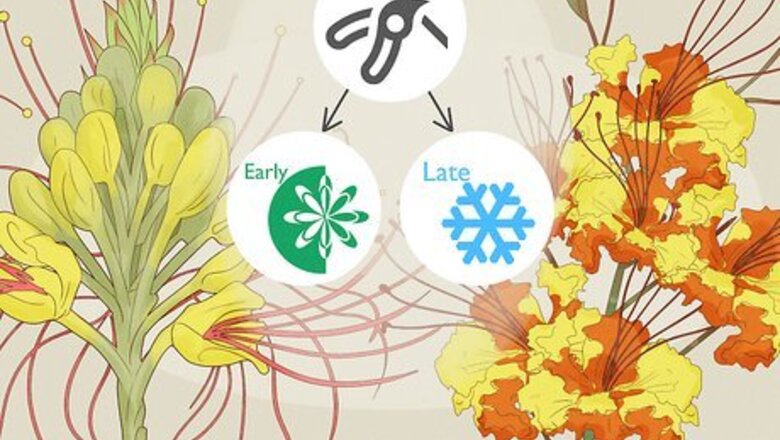
views
Deciding When to Prune
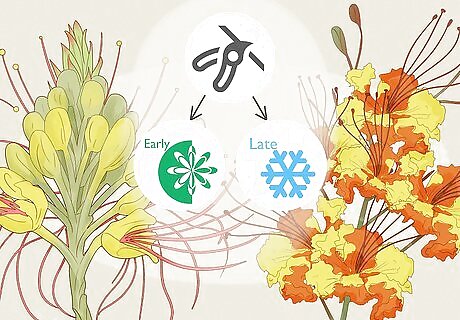
Begin pruning Yellow and Mexican varieties in late winter and early spring. After cold winter weather ends, you can start assessing your Yellow and Mexican Bird of Paradise flowers to prune them. Pruning at this point will encourage new growth in the plant later in the season. Both Yellow and Mexican Bird of Paradise flowers should be pruned sparingly when flowers and stems begin to die.

Prune Strelitzia variety blooms sparingly in the spring. Strelitzia Bird of Paradise flowers don’t require as much pruning, but you can remove dead blooms and foliage in the springtime. Only remove the stems and leaves that have died and are brown. If the plant isn’t growing well throughout the year, prune at least half of the stems to the ground to allow the plant to grow healthy blooms.

Tend to Red varieties in the early spring and midsummer. Once the weather turns warmer and there’s no more threat of frost, trim Red Bird of Paradise plants to 6 to 12 inches (15 to 30 cm) from the ground. Depending on the level of growth throughout the spring and summer, trim the flowers again in the middle of summer. Red Bird of Paradise flowers are very hardy and can handle heavy pruning two times per year if the plant is healthy.
Clearing Dead Blooms
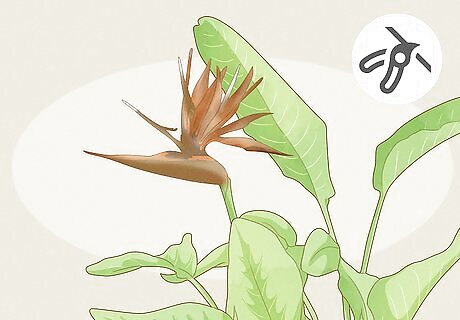
Look for brown, dead flowers. Dead flowers are pretty easy to spot in the bush because the natural color of the plant is so vibrant. Once the orange blooms and blue base of the flower begin to fade to brown, it’s time to deadhead (remove dead flower heads). It’s okay to begin pruning before all of the blooms on the plant have died. If you have even 2 or 3 dead blooms, removing them can help the remaining flowers live longer.
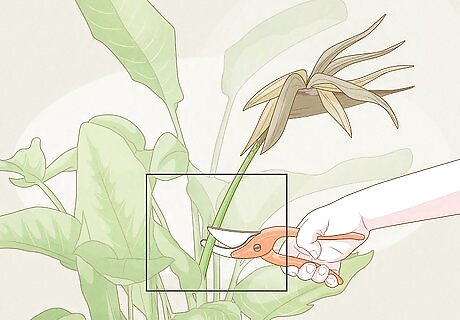
Cut the stem of the dead flower as close as possible to the base of the plant. Follow the stem of the dead flower to the base of the plant, then use your pruning shears to snip as close as possible to the base of the plant. This will prevent the long stem from browning and rotting after you remove the flower. Bird of Paradise flowers won’t naturally shed dead stems after the flower is removed, so it’s important to remove as much of the stem as possible. This helps your plant to look clean and colorful year round! Always wear thick gardening gloves when pruning.
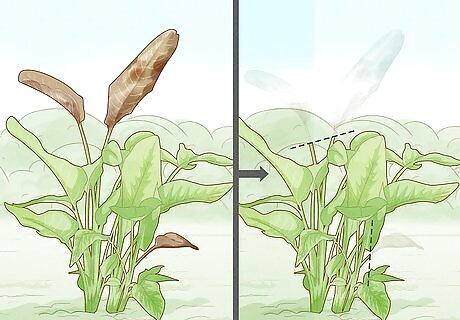
Cut or pull any excess brown foliage. The Bird of Paradise also has large green leaves that can die and begin to brown once blooming is over. Normally, you can pull these using just your hands. You can also use the pruning shears to remove any stubborn leaves that won’t come out. Always try to remove any dead foliage as close to the stump of the plant as possible to maintain the trimmed appearance of the plant. Failure to remove dead leaves can result in rotting and fungal infections that can kill the plant completely, so make sure you dispose of the dead foliage completely!
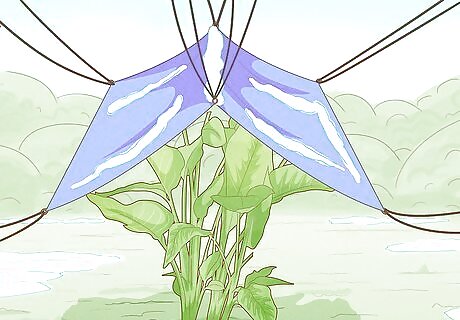
Cover the plant with a tarp during deep freezes. If you live in an area that can get the occasional freezing night, you should cover your plant with a tarp to protect its blooms. One freeze can cause numerous dead flowers and leaves. If your plant is in a pot, bring it indoors during very cold temperatures to prevent freezing of the leaves and flowers.
Caring for Mature Plants
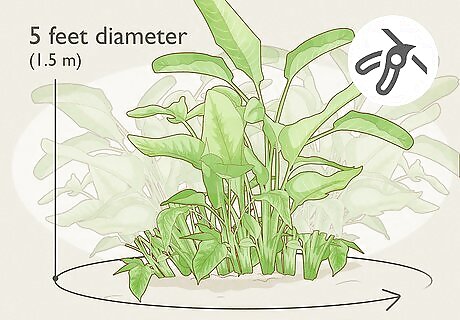
Trim the outer ring of growth using your pruning shears. If you have a plant that is growing out of control and is wider than you’d like, you can remove the outer edges of the plant by cutting the stems and leaves to the base. This will control the area taken up by the plant and allow you to access interior growth more easily. Try to maintain the shape of the flower in a circle to ensure easy access to all sides of the flower. These plants can easily grow to be up to 5 feet (1.5 m) in diameter, so refrain from planting other flowers in the surrounding area.
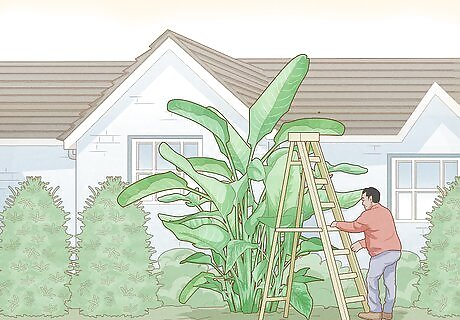
Use a ladder to access tall stems on more mature plants. Bird of Paradise flowers can grow to be extremely tall. If you have very tall shoots, use a ladder placed on stable ground to cut the dead stems in half. Once they’ve been halved, climb down from the ladder and cut the stems to the base of the plant. Always be careful on the ladder! You might need a friend or neighbor to hold it steady while you’re trimming to avoid getting hurt with the shears.

Tame an out-of-control Bird of Paradise using a pruning saw. If your plant is too dense and crowded with dead foliage and growth for you to reach the center, use a large pruning saw to cut the entire plant about 1 foot (0.30 m) off of the ground. This will give you space to clear out the foliage and allow for new growth. When using the saw, work slowly. If you hit a particularly dense area, use your pruning shears to pre-cut some of the stems to make the area a little easier to cut through. A Bird of Paradise that is trimmed in this way will normally grow back within 1-2 blooming seasons if treated with water and fertilizer.














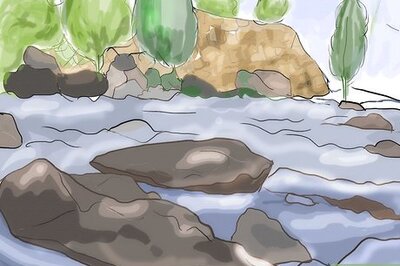
Comments
0 comment